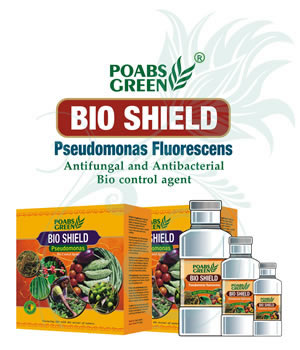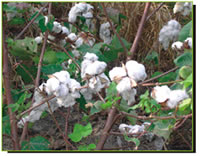 Pseudomonas BIOSHIELD
Pseudomonas BIOSHIELDPOABS GREEN Bio Shield is a formulation containing Pseudomonas fluorescens, which is an antifungal and antibacterial bio control agent.
ADVANTAGES: Pseudomonas fluorescens suppress plant diseases by protecting the seeds and roots from fungal and bacterial infection. This effect is the result of production of a number of secondary metabolites including antibiotics, siderophores and hydrogen cyanide. Pseudomonas secrete numerous antibiotics including P.C.A, D.A.P.G, Oomycin A etc. which show strong antimicrobial activity. They produce siderophores, a compound that binds with iron present in the soil, making it unavailable for other microorganisms Production of fungal cell wall digesting enzymes like β 1-3 Gluconase, Kitinase is another line of defence mechanism exhibited by this bacteria. Pseudomonas fluorescens is found effective in controlling diseases of rice, wheat, vegetables, pulses, cotton, banana etc. incited by species of Helminthosporium, Alternaria, Fusarium, Diplodia, Pyricularia, Cladosporium, Rhizoctonia, Phythopthora, Phythium, Colletotrichum, Ralstonia, Xanthomonas, to name just a few.
Applications of Pseudomonas

- Fusarium wilt of curcubitaceous vegetables like cucumber.
- Root infections caused by Fusarium oxysporium in celery.
- Chickpea wilt, red gram wilt and groundnut root wilt.
- Rhizoctonia solani and Pythium ultimatum infections in cotton.
- Pythium rot of wheat.
- Quick wilt and fungal pollu of black pepper.
- Bacterial leaf rot and Phythopthora infestation in betel vine.
- Bacterial leaf blight of Anthurium.
- Colletotrichum and Phythopthora infection in Vanilla.
- Rhizome rot of ginger.
- Root nematodes inhabiting the root zone of most crops.